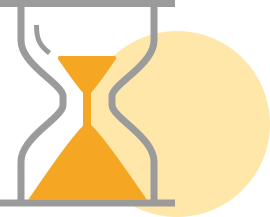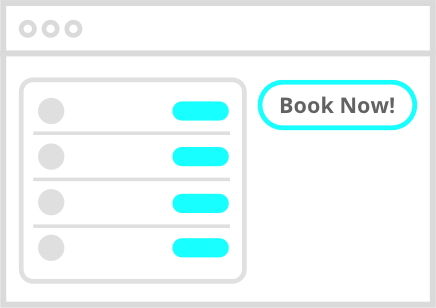
Would you like to capture more leads from your website? OnceHub CEO Rami Goraly shares his golden rules for improving conversion from online scheduling.
Using online scheduling has definite advantages over web forms. With a Booking page you’re not only capturing a lead’s contact details, you’re also capturing their time with a confirmed meeting. This signals sincere interest, fosters commitment, and shortens time to engagement. It means more qualified leads enter your funnel.
Optimizing your Booking page reduces the bounce rate and lead spillage, and ensures you're getting the most out of your online scheduling for maximum conversion.
Let’s look at the five ways you can boost your Booking page and drive more leads down your funnel.
Rule 1: Include multiple calls to action

Include calls to action throughout your website that point to your Booking page. By call to action, we mean ‘Book now’ or ‘Schedule your meeting today.’ You want to make it as easy as possible for the lead to schedule a meeting with you. Your main call to action should be above the fold so your lead can’t miss it. Other areas to place calls to action include your header, footer, and Contact page. You can also use calls to action in floating buttons, widgets, and even in your forms. Each one should open up your Booking page. Visibility is key.
Rule 2: Express your brand

The website Booking page should reflect your company branding. ScheduleOnce integration contains no branding for this reason. Your scheduling tool is an extension of your website and your leads need to experience a seamless user flow. Use our easy-to-use Theme designer to make your Booking page unique to your business. Even your calls to action buttons can be customized to be in line with your corporate identity.
Rule 3: Keep it short

When creating your Booking page, less is more. Shorter meeting slots are easier to commit to and less intimidating. Fifteen minutes is enough for a first call. Secondly, keep your Booking form short and only ask for what you need – name and email. You don’t want to scare your lead away by asking them to fill out an unnecessarily long form. The length of time between booking and the meeting should also be short as it decreases the likelihood of cancellation. Lastly, keep your selection options to a minimum. These could be your office locations and team members. You want to make the booking process as quick as possible to keep the momentum going.
Rule 4: Optimize the online scheduling journey

Your Booking form needs to fit in with your lead’s user journey. Keep the flow quick and easy. Use automatic redirects to ensure a seamless experience. You can control how long the redirect will take. For example, it can happen immediately or after a few seconds.
Personalize the booking experience as much as possible and include custom confirmation pages. For example, if you integrate with Salesforce and the lead clicks on your Booking form from an email, they won’t need to fill out the form as you already have their details. This nurtures the commitment you want to build.
Rule 5: Reinforce your value proposition

Notifications are your opportunity to further interact with your customer during the time between booking and meeting. It’s also your opportunity to reinforce your value proposition. The ScheduleOnce Notification templates editor is customizable and features templates you can use for this purpose. Reminders let the customer know that you’re excited about the meeting, which encourages them to attend. The cancellation notification is the most important as it presents an opportunity to recapture that lead. Include a call to action to reschedule and encourage your customer to re-engage.
Website bookings may be more effective than web forms for capturing hot leads, but just like any website, they need to be optimized for best results.
To learn more about this topic, watch our webinar below:
Want to read more best practice advice? Learn how to convert cold leads into new customers here.
Related topics from Insights
- Webinar: Top 5 reasons to offer multiple video conferencing options
- Offer multiple video conferencing choices to your customers
- GoToMeeting security best practices with OnceHub native GoTo Meeting integration
- 7 top scheduling practices for successful coaches or consultants
- Best practices for secure video meetings
